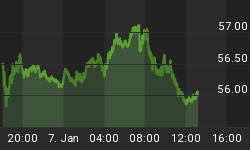On a year-over-year basis, the quarterly average of the index of Leading Economic Indicators (LEI) began contracting in the first quarter of 2007. With the exception of the third quarter of 2007, the quarterly average of the LEI has continued to contract. We alerted our readers that multiple consecutive quarters of year-over-year contractions in the LEI usually were the harbinger of recessions. We had ignored the history of the LEI's recession-predictive powers in the past and were determined not to repeat that mistake. Many of our mainstream peers mocked the message being sent by the Leading Indicators, derisively referring to them as the Mis-Leading Indicators. Now, of course, everyone knows that the U.S. economy has entered a recession even though the NBER has not gotten around to acknowledging it. We also knew that the S&P 500, a component of the LEI, usually peaks before a recession sets in. That is why it is helpful for investors to know when a recession is imminent. It does investors little good to know it months after the recession has begun.
The index of Coincident Economic Indicators (CEI) peaked in October 2007. It is likely that the NBER will declare that the onset of this recession began in the first quarter of 2008.
Below is a chart of the year-over-year percent changes in the quarterly averages of the LEI and the CEI. Investors might be wise to study it, save it and update it.
Chart 1















